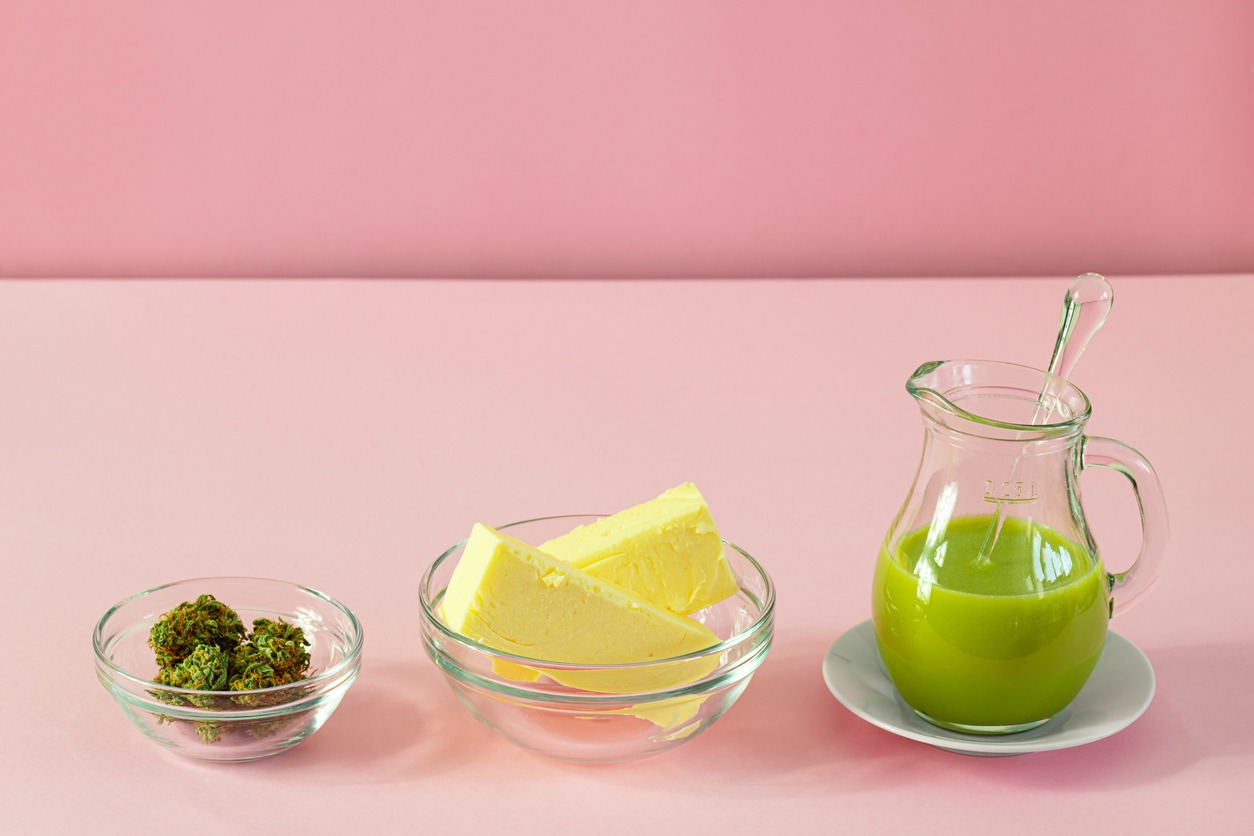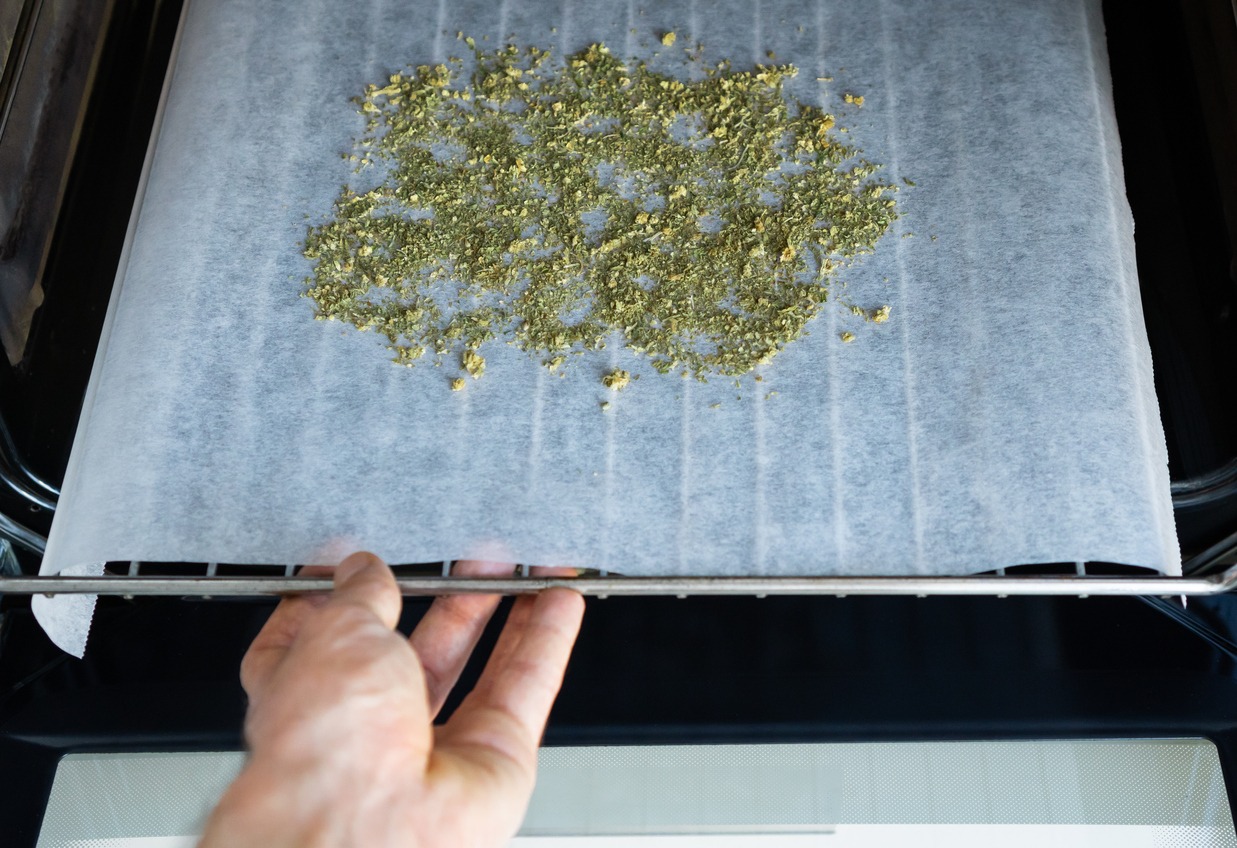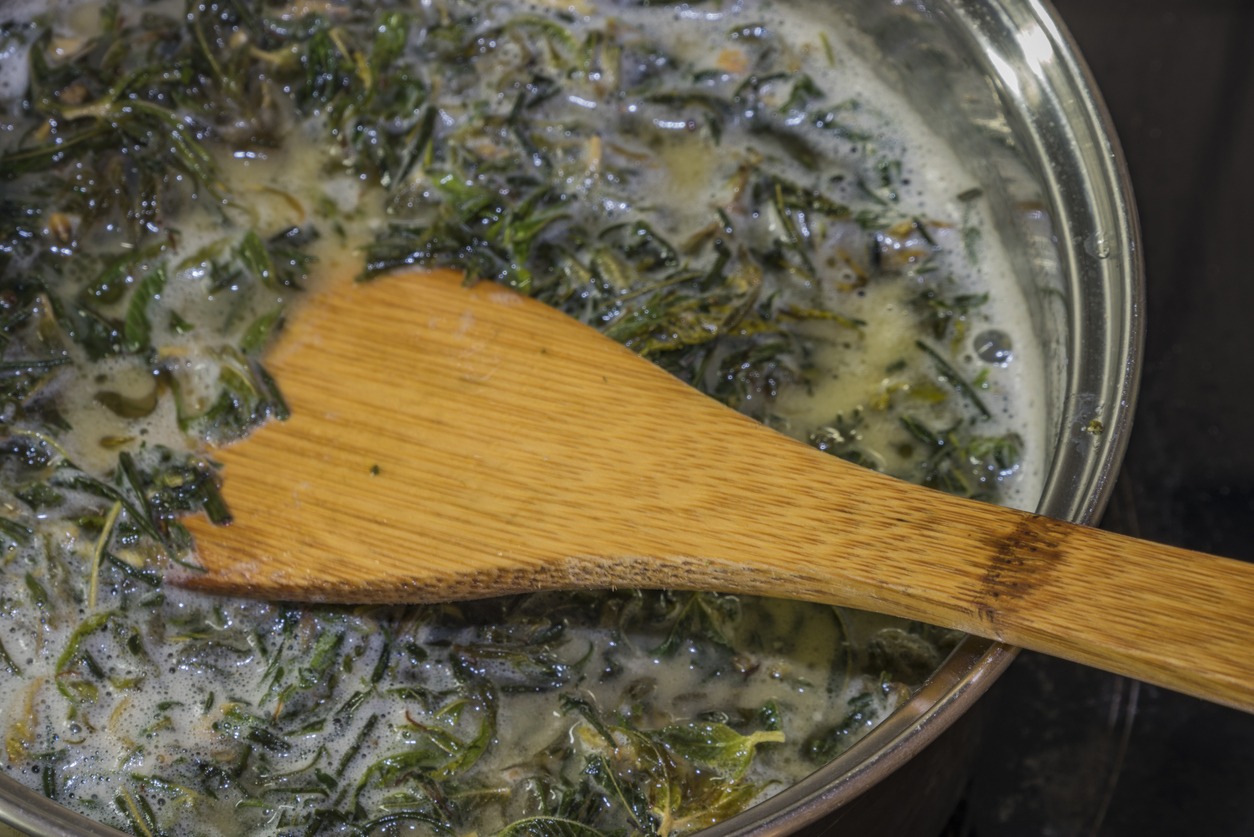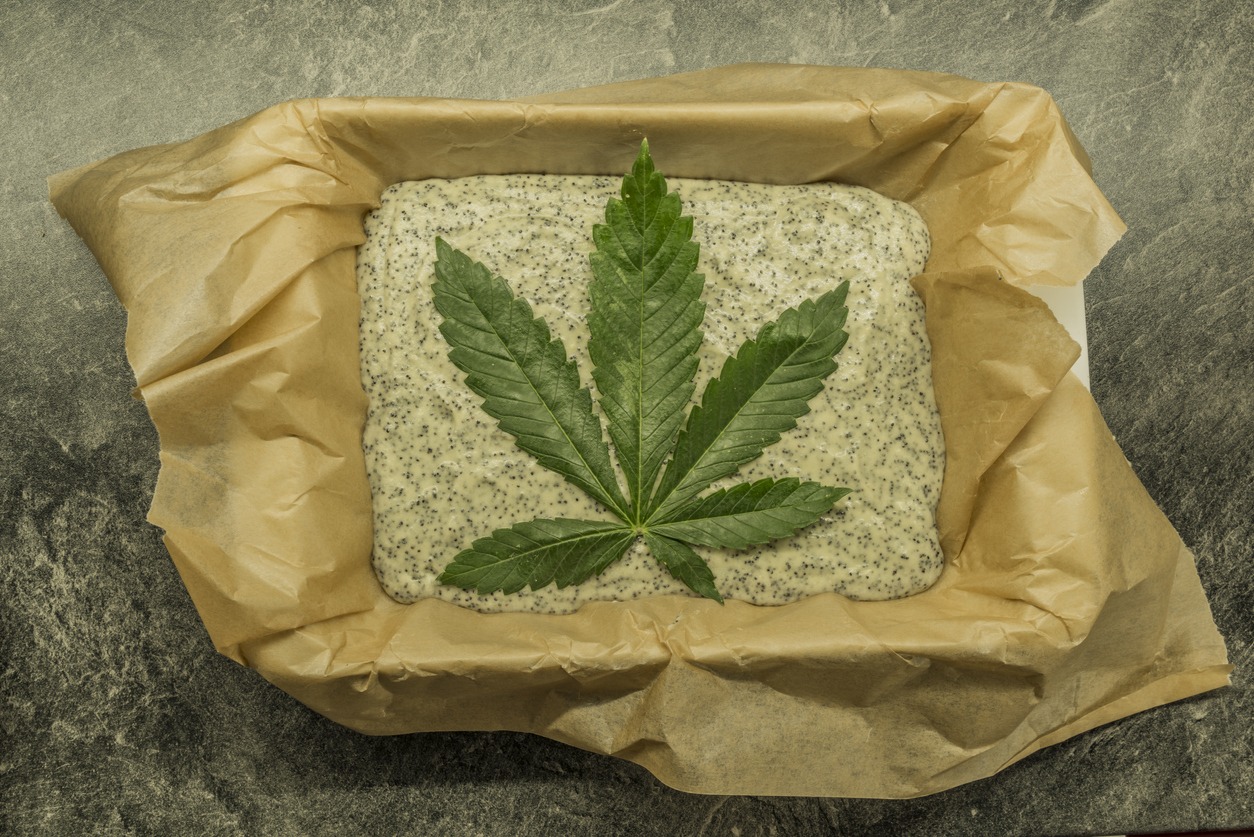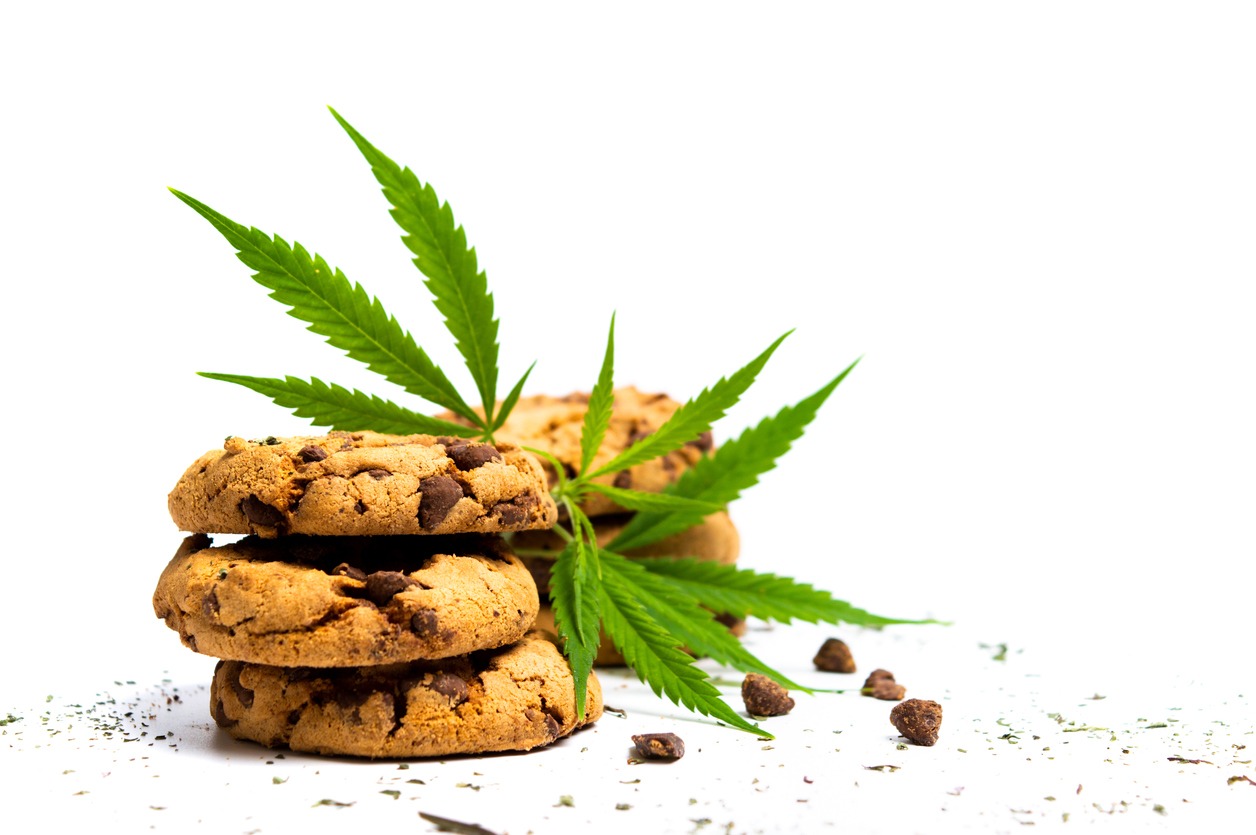Are you interested in cooking with cannabis? Whether you’re a pro or just starting, making cannabutter can enhance your cooking. It’s not just mixing butter and cannabis; it’s an art that adds flavor and effects to your dishes.
This guide makes it easy, ensuring a perfect blend every time. From choosing the right strain to getting the consistency right, we’ve got you covered. So, are you ready to put on your apron and start making delicious cannabutter at home?
Cannabutter Basic
Cannabutter is an essential component in cannabis-infused cooking, made by infusing butter with decarboxylated cannabis, typically using marijuana buds or delta 8 flower. The process involves grinding cannabis, baking it to activate THC, and then simmering it in melted butter. This infusion extracts the psychoactive compounds, resulting in a potent butter.
The key to successful cannabutter lies in the ratio of cannabis to butter and the length of simmering, ensuring maximum infusion. It’s typically used in various recipes, substituting regular butter to add a cannabis kick. Start with small amounts due to its strength, and always store it properly. It’s important to use cannabutter responsibly and be aware of its legal status in your area.
What Ingredients and Equipment You Need
To make Cannabutter, you need a few key ingredients and pieces of equipment:
Ingredients for making Cannabutter:
Cannabis: High-quality, dried cannabis flower is essential. The strain depends on your preference for THC or CBD content.
Butter: Regular, unsalted butter is typically used to ensure the flavors blend well.
Equipment required to make Cannabutter:
Grinder: To finely grind the cannabis flower.
Baking Sheet: For decarboxylating the cannabis in the oven.
Saucepan or Slow Cooker: For infusing the butter with cannabis.
Strainer or Cheesecloth: To filter out the plant material from the butter.
Storage Container: An airtight container for storing the finished cannabutter.
Step-by-Step Guide on how to make Cannabutter
Making cannabutter involves several key steps, each essential for creating this unique,
cannabis-infused ingredient. Step by step process is given below:
Step 1: Decarboxylation
Decarboxylation is the first crucial step in making cannabutter. Start by grinding the cannabis buds to increase their surface area. Spread the ground cannabis evenly on a baking sheet lined with parchment paper.
Bake it in an oven preheated to 245°F for 30-40 minutes, stirring occasionally. This process activates the THC in the cannabis, making it psychoactive. It’s important to maintain a low temperature to prevent burning the cannabis, as high heat can destroy its active compounds.
Step 2: Infusion
After decarboxylation, infuse the activated cannabis into butter. Melt unsalted butter in a saucepan over low heat, then add your decarboxylated cannabis. Keep the heat low to avoid burning the mixture.
Allow the mixture to simmer gently for 2 to 3 hours, stirring occasionally. This slow infusion ensures that the THC is thoroughly extracted from the cannabis into the butter. Keeping the temperature consistent is key; too high heat can evaporate the THC, while too low might not release its full potential.
Step 3: Straining
Once the infusion process is complete, the next step is straining. Place a cheesecloth or a fine mesh strainer over a bowl or container and pour the mixture through it. This separates the plant material from the butter, leaving you with a smooth cannabutter.
Gently squeeze the cheesecloth to extract as much butter as possible. Be sure to do this carefully to avoid spilling or wasting the cannabutter. Discard the leftover plant material or keep it for use in other recipes if desired.
Step 4: Cooling and Storing
After straining, let the cannabutter cool. If you use water in the infusion process, it will separate from the butter upon cooling. After cooling, separate the solidified butter layer on top and discard the water.
Transfer the cannabutter to an airtight container for storage in the refrigerator or freezer. When refrigerated, it remains fresh for a few weeks, and in the freezer, it can be preserved for several months.
Proper storage is key to maintaining its quality and preventing spoilage. Use it as a replacement for regular butter in various recipes, keeping in mind its potency.
How to use cannabutter
Cannabutter is a versatile and potent ingredient, blending the culinary world with the therapeutic benefits of cannabis. It’s essentially butter infused with cannabis, and its use in cooking is a creative way to enjoy the effects of cannabis while indulging in delicious food.
Baking: Cannabutter is frequently used in baking. It can be a direct substitute for regular butter in recipes for cookies, brownies, cakes, and pastries, infusing a cannabis twist into these classic treats.
Cooking: Beyond sweets, cannabutter can be used in savory dishes. It’s suitable for making cannabis-infused sauce gravies or as a butter replacement in recipes like pasta, risotto, or even in sautéed dishes.
Spreads and Toppings: Cannabutter can be used as a spread on toast, bagels, or muffins for a cannabis-infused start to the day or as a unique snack addition.
Infused Beverages: For a hot, cannabis-infused beverage, cannabutter can be blended into coffee, tea, or hot chocolate, adding a creamy texture and the effects of cannabis.
Homemade Edibles: You can use cannabutter to create own edibles like candies, chocolates, and gummies. This allows for the customization of flavors and dosages.
Seasoning and Garnishing: Melted cannabutter can be drizzled over popcorn, used in salad dressings, or as a finishing touch on dishes like steamed vegetables, giving an ordinary meal a cannabis-infused flair.
Medicinal Purposes: For those using cannabis for medicinal reasons, cannabutter offers a way to consume their medication in a form that’s easier to ingest and dose than smoking or vaping.
How to store cannabutter
Storing cannabutter properly is crucial to maintain its potency, flavor, and freshness. Here are a few tips to store cannabutter effectively:
Cool and Dark Location
Cannabutter, like regular butter, should be stored in a cool, dark place. Light and heat can degrade the cannabinoids and terpenes in the butter, reducing its effectiveness.
Airtight Container
Use an airtight container to store cannabutter. This prevents it from absorbing flavors from other foods in the fridge and also keeps it from emitting any cannabis smell.
Refrigeration
Store cannabutter in the fridge for short-term use. Typically, it stays fresh from a few weeks up to a month, influenced by the original freshness of the butter.
Freezing for Longevity
Freezing cannabutter is the optimal choice for extended preservation. It remains stable for as long as six months when frozen. Pre-portioning before freezing is recommended for convenient use without defrosting the entire batch.
Wrap Tightly
If freezing, wrap the cannabutter tightly in plastic wrap or aluminum foil before placing it in an airtight container. This helps to prevent freezer burn and preserve its quality.
Label Clearly
Always label the container with the date of preparation and the potency if known. This is especially important if you have multiple edibles or different batches with varying strengths.
Keep Away from Children and Pets
Store cannabutter out of reach of children and pets. It should be clearly marked and ideally locked away if possible, to prevent accidental ingestion.
Safety and Legal Considerations
When dealing with cannabutter and cannabis-infused products, safety and legality are paramount. Here are key considerations:
Legal Compliance
Verify that using, possessing, and making cannabis-infused products such as cannabutter is legal where you live. The laws differ greatly, and the consequences for not adhering to them can be harsh.
Dosage Control
It’s essential to understand and control the dosage of cannabis in cannabutter. Overconsumption can lead to uncomfortable or harmful effects.
Labeling
Clearly label cannabutter and any edibles made with it. This helps prevent accidental consumption, especially among children, guests, or those unfamiliar with cannabis.
Safe Storage
Store cannabutter securely, away from children and pets. Treat it like any other medication or potent substance.
Avoid Cross-Contamination
Keep cannabutter separate from regular butter or cooking ingredients to prevent unintentional ingestion.
Don’t Drive or Operate Machinery
Consuming cannabis, even in edible form, can impair your ability to drive or operate heavy machinery. Avoid these activities when using cannabutter.
Respect Non-Users
Be mindful and respectful of those around you who may not use or approve of cannabis.
Consult Healthcare Providers
If you’re using cannabis for medicinal purposes, consult with a healthcare provider for guidance on dosage and potential interactions with other medications.
Understanding and respecting these safety and legal considerations ensures the responsible use of cannabutter and helps maintain a safe environment for everyone.
Conclusion
In wrapping up our cannabutter journey, crafting this unique ingredient is more than a recipe—it’s a culinary adventure. With our outlined steps, you can now create personalized cannabutter to match your taste and potency preferences. Experimenting with different strains yields various flavors, transforming ordinary dishes into extraordinary experiences.
Use your homemade cannabutter to add magic to favorite recipes. Always consume responsibly, and share your creations with others. Whether for medicinal purposes or culinary enhancement, the possibilities are endless. So, unleash your imagination, savor the delightful journey, and enjoy the wonders that cannabutter brings to your kitchen!
FAQs About Cannabutter
How long should you cook cannabutter?
The cooking time for cannabutter varies but generally ranges from 2 to 4 hours. The key is maintaining low heat to avoid burning the butter or degrading the cannabinoids. This slow-cooking process ensures that the THC and other beneficial compounds are effectively infused into the butter.
How long does cannabutter last?
Cannabutter lasts up to a month in the refrigerator and about six months when properly stored in the freezer.
Can I add raw cannabis flower to my butter?
No, raw cannabis flowers should be decarboxylated first to activate THC before infusing it into the butter for effective results.
What Can You Make with Cannabutter?
With cannabutter, you can make brownies, cookies, sauces, spreads, infused beverages, and various other baked and savory cannabis-infused dishes.
How Much Cannabutter Should You Use?
Use cannabutter in moderation, starting with a small amount and adjusting based on desired potency and individual tolerance levels.

